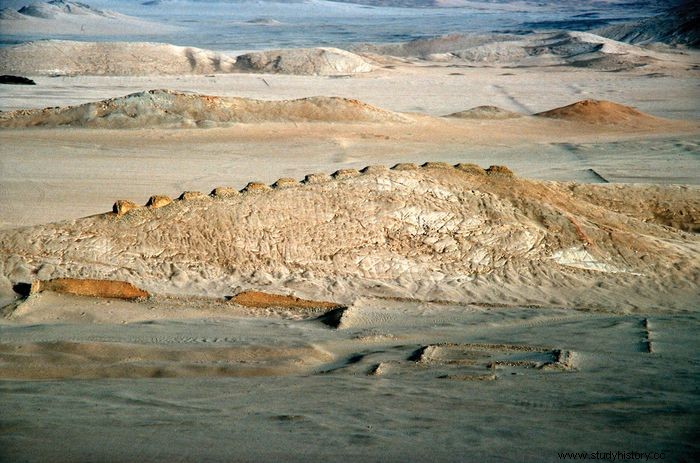Chankillo , also Thirteen towers called Chankillo , archaeological site between 200 and 300 v . Ch. In the desert of the Sechín River Basin in the Peruvian Region Ancash . The site is approximately 14 km from Pacific Coast and consists of a hilltop complex surrounded by thick, closed walls, a series running north to south of 13 towers, and viewing platforms on either side of the towers. In 2007, archaeological research emerged indicating that Chankillo was a solar observatory capable of Solstice and the Equinox , the oldest of its kind in America.

Chankillo had been a researcher and archaeologist since at least the 19th century, up until the discoveries made by Peruvian archaeologist Ivan Ghezzi and the British archaeoastronomer Clive Ruggles 2007, a mystery. It was believed to be a hilltop fortress, but with no water source within the walls and many entrances, it did not seem a well-protected or practical place for that purpose be. According to Ghezzi and Ruggles, the placement of the 13 towers follows the arc of the changing position of the sun as it sets and rises over the six months between solstices. Summer solstice sunrise coincides with the northernmost tower from the observation point, and sunrise coincides with the southernmost tower at Winter Solstice Match . Thus, the site would have had ritual functions, serving as a great calendar recording harvest and planting times, as well as the timing of religious festivals. Until determining Chankillo's purpose, it was assumed that the Inca 2000 years later was the first civilization to worship the sun.
